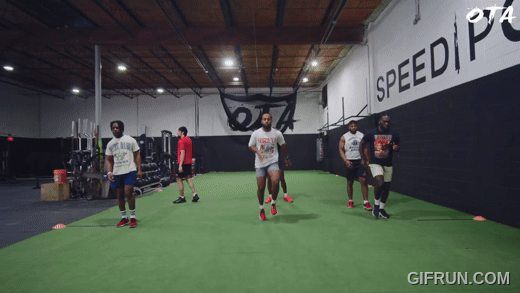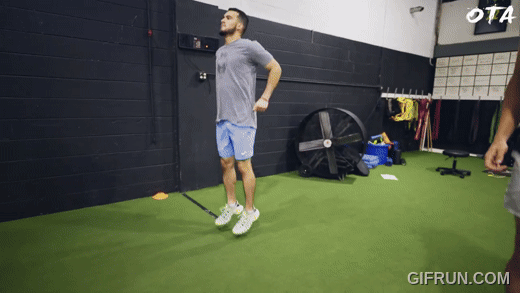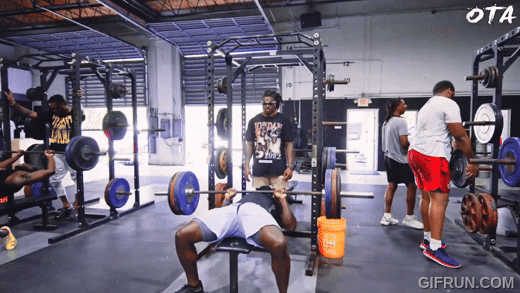Preventing Injury: Key Practices for Athletes
Injury prevention is a critical aspect of an athlete’s training regimen. Whether you’re a professional competitor or a recreational enthusiast, the risk of injury can be reduced through proper training techniques, recovery strategies, and lifestyle practices. Understanding how to safeguard your body while pushing your limits is essential not only for performance but also for long-term health. This blog post explores five key strategies for preventing injury: proper warm-up and cool-down routines, strength training and conditioning, maintaining proper technique and form, ensuring adequate rest and recovery, and staying hydrated with proper nutrition.
1. Warm-Up and Cool-Down Properly
Warming up before exercise and cooling down afterward are often overlooked, yet they are two of the most effective practices for reducing injury risk. A proper warm-up helps prepare your body for the physical demands of exercise, while a cool-down facilitates muscle recovery and reduces soreness.
Warm-Up: Essential for Injury Prevention
A warm-up is not just about stretching—it’s about gradually preparing your body for more intense activity. It is designed to increase blood flow to the muscles, enhance joint mobility, and elevate your heart rate, which helps prevent strain or injury during exercise. Dynamic stretching, which involves moving muscles through their full range of motion, is an excellent way to activate your body. Some examples of dynamic stretches include leg swings, arm circles, or walking lunges. Light aerobic exercises such as jogging, cycling, or brisk walking are also key to loosening up your muscles before the main workout begins.
The primary goal of a warm-up is to prepare both your muscles and joints for more strenuous physical activity. It helps reduce muscle stiffness, increases flexibility, and allows for smoother, more efficient movement during the workout. This significantly lowers the risk of muscle tears, ligament sprains, and joint injuries, especially in sports or activities that involve high impact or quick directional changes, such as basketball, running, or football.

Cool-Down: A Key to Recovery
After intense exercise, a cool-down routine is just as important. Cooling down helps the body transition back to a resting state and can reduce the likelihood of muscle stiffness and soreness in the days that follow. A good cool-down typically includes static stretching, which involves holding a stretch for a prolonged period (15 to 30 seconds). Stretching major muscle groups, such as the hamstrings, quadriceps, calves, and back, helps to relax the muscles and improves flexibility.
Additionally, a cool-down can help regulate your heart rate and blood pressure, allowing for a smooth transition back to a normal state. By incorporating stretching and deep breathing into your cool-down, you can also promote better circulation, which aids in the removal of metabolic waste products that accumulate during intense physical exertion. This helps speed up muscle recovery and enhances flexibility over time, reducing the likelihood of future injuries.
2. Strength Training and Conditioning
Strong muscles are less prone to injury, especially when they are well-conditioned and balanced. Strength training and conditioning are fundamental for athletes looking to prevent injury, as they enhance muscle endurance, joint stability, and overall strength.
Building Muscle Endurance and Joint Strength
A well-rounded strength training program that targets all major muscle groups is essential for injury prevention. Strengthening the muscles around vulnerable areas such as the knees, lower back, and shoulders can provide additional support to the joints, reducing the risk of overuse injuries or strains. These key areas are often prone to injury because they are involved in repetitive movements or bear a significant amount of the body’s weight during exercise.
For example, strengthening the quadriceps, hamstrings, and glutes can help stabilize the knees, which are susceptible to injuries like ACL tears or patellar tendinitis. Similarly, strengthening the muscles of the back and core improves posture and reduces strain on the spine, decreasing the likelihood of back injuries.
 Balancing Strength and Mobility
Balancing Strength and Mobility
It’s important to remember that strength training should go hand in hand with mobility exercises. While strength builds muscle mass, mobility ensures the muscles and joints can move freely and without restriction. Combining strength training with stretching or yoga practices improves joint flexibility, helping athletes perform better and reduce injury risk.
3. Proper Technique and Form
No matter how fit or strong an athlete may be, improper technique and form can lead to injury. Whether lifting weights, running, or performing sport-specific movements, maintaining proper posture and body mechanics is crucial.
Preventing Overuse and Long-Term Damage
When athletes perform repetitive motions incorrectly, they place undue stress on specific muscles, tendons, and ligaments, which increases the risk of overuse injuries. For example, improper running form—such as landing with an overextended stride or misaligning the knees—can lead to shin splints, stress fractures, or IT band syndrome. Similarly, poor posture or improper lifting technique in weight training can cause strain in the lower back or shoulders.
Working with coaches or trainers to ensure correct form is one of the best ways to prevent injury. Coaches can provide valuable feedback on posture, alignment, and movement patterns, helping athletes refine their technique and avoid mistakes that could lead to injury over time.

4. Rest and Recovery
Intense training sessions and competition can take a toll on an athlete’s body, which is why proper rest and recovery are essential for injury prevention. Overtraining without sufficient recovery increases the risk of fatigue-related injuries, which can lead to muscle strains, ligament sprains, and other types of damage.
The Importance of Active Recovery
While rest days are crucial, athletes should also engage in active recovery, which involves low-intensity activities that help maintain blood flow and promote healing. Activities such as walking, swimming, or light cycling are great options for active recovery. Foam rolling, yoga, and stretching can also alleviate muscle tightness and improve flexibility, aiding in the recovery process.
Additionally, prioritizing sleep is essential for muscle repair and recovery. Sleep is when the body does most of its healing and tissue regeneration, making it a key component in preventing injury. Inadequate sleep can lead to increased fatigue, slower reaction times, and compromised performance, all of which contribute to a higher risk of injury.
5. Hydration and Nutrition
Proper hydration and nutrition are the foundation of an athlete’s overall health and injury prevention efforts. Dehydration can lead to muscle cramping, fatigue, and decreased performance, all of which increase the likelihood of injury. Maintaining hydration ensures that muscles receive the oxygen and nutrients they need to perform at their best.
Nutrition for Muscle Repair
Nutrition plays a crucial role in muscle recovery and injury prevention. After a workout, it’s essential to replenish glycogen stores, repair muscle tissue, and reduce inflammation. Consuming a balanced diet rich in protein, healthy fats, and complex carbohydrates helps fuel your body and support muscle recovery. Protein, in particular, is vital for repairing muscle fibers that break down during exercise. Omega-3 fatty acids and antioxidants from fruits and vegetables can help reduce inflammation and support the body’s healing processes.
By ensuring proper hydration and fueling the body with the right nutrients, athletes can keep their muscles and joints functioning optimally, reducing the risk of strain and injury.
Conclusion
Injury prevention is a multifaceted approach that requires attention to various aspects of an athlete’s routine, from preparation and strength training to recovery and proper nutrition. By warming up and cooling down properly, strengthening muscles, maintaining proper technique, prioritizing rest and recovery, and focusing on hydration and nutrition, athletes can significantly reduce their risk of injury and perform at their peak.
Incorporating these practices into your training routine not only helps prevent injury but also enhances your overall performance, ensuring a longer, healthier athletic career. By taking care of your body and following these principles, you’re setting yourself up for success both on and off the field!

 Balancing Strength and Mobility
Balancing Strength and Mobility